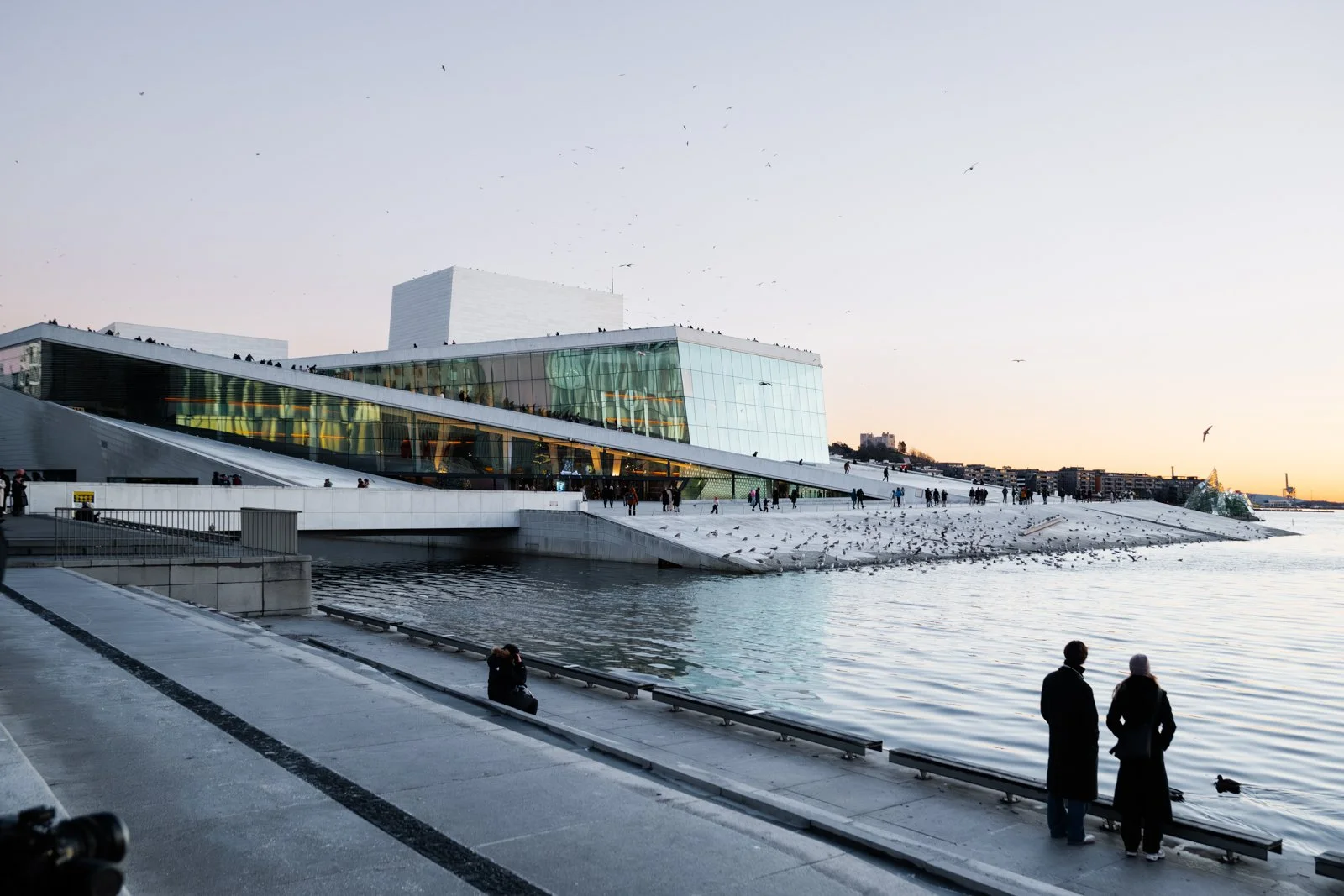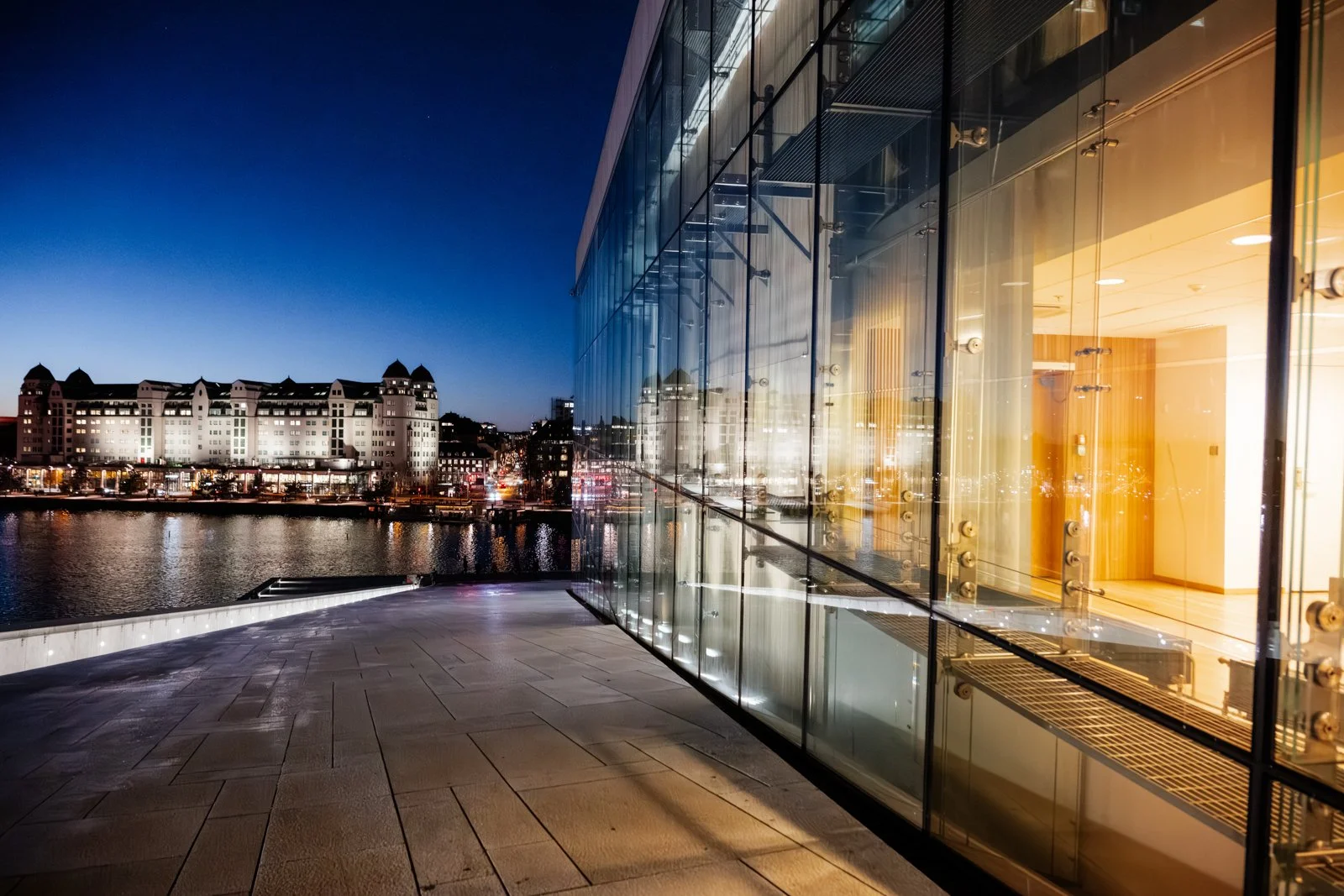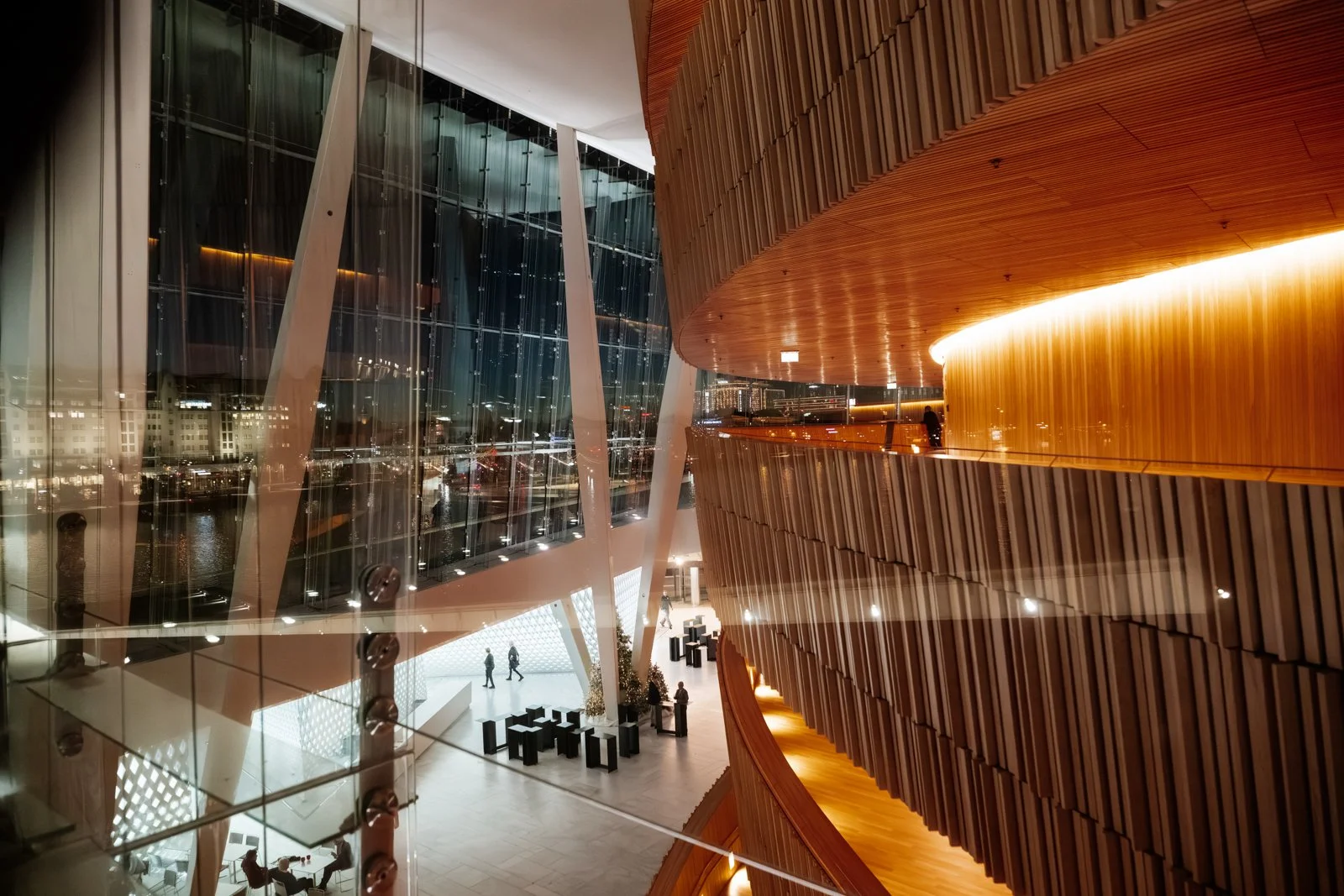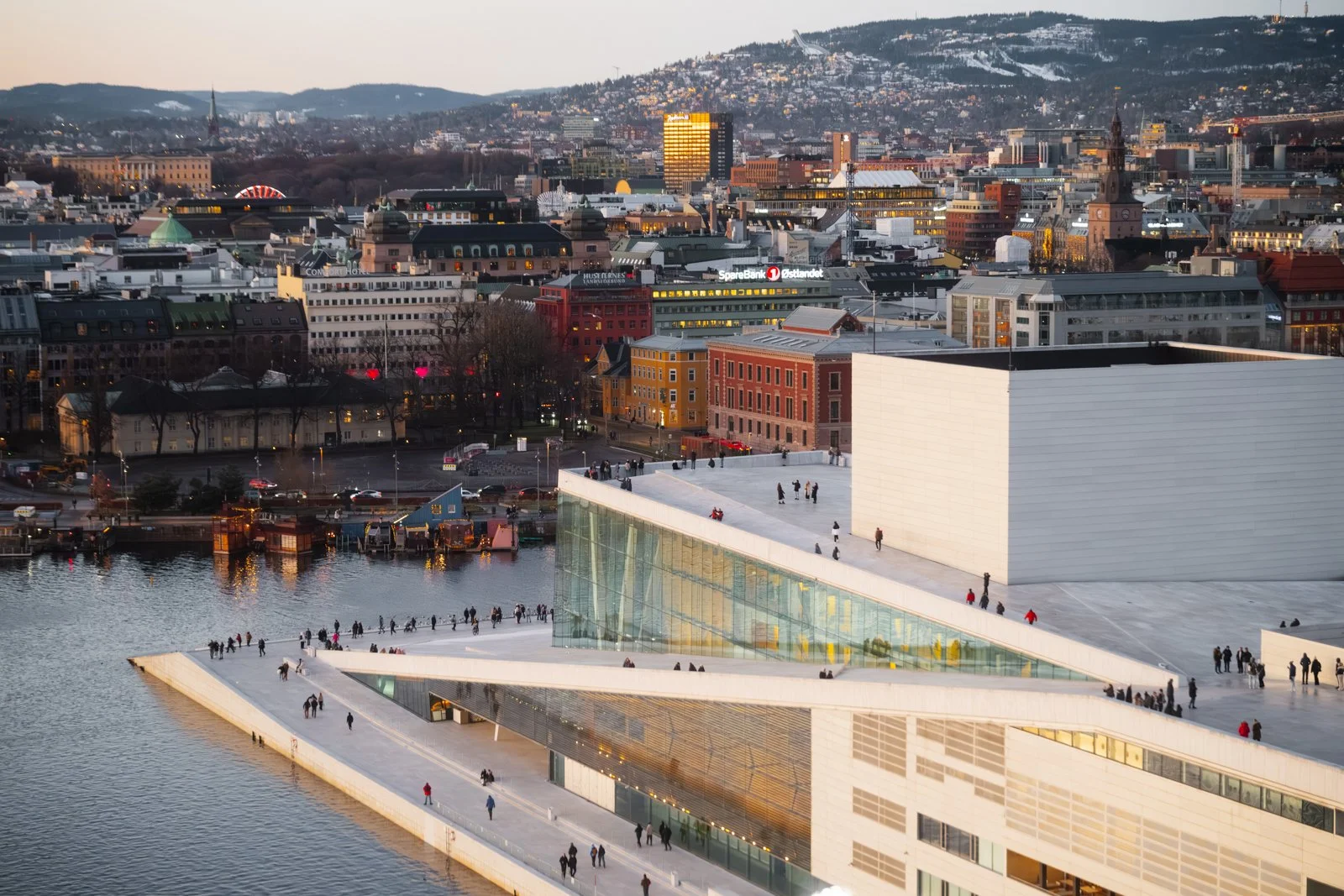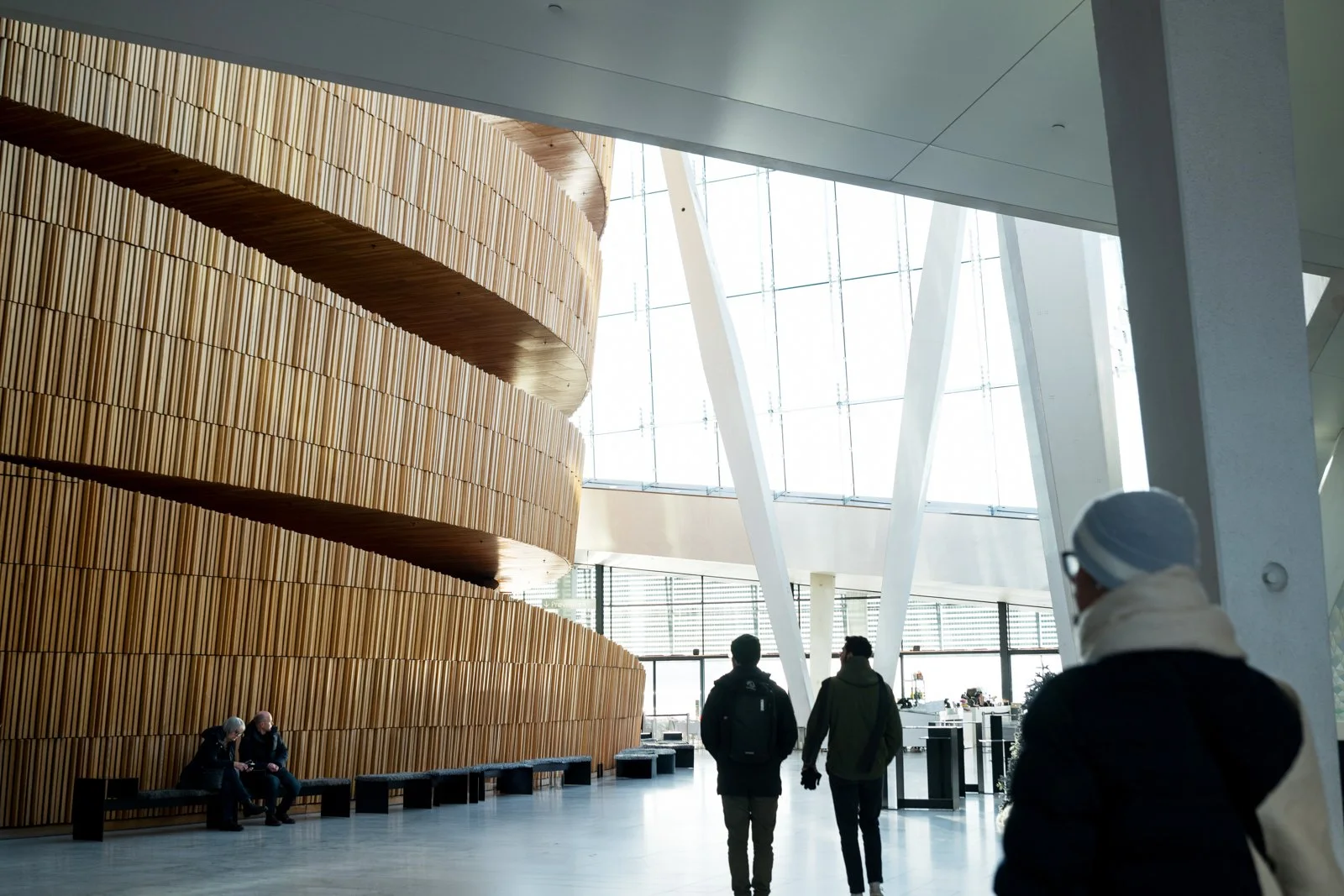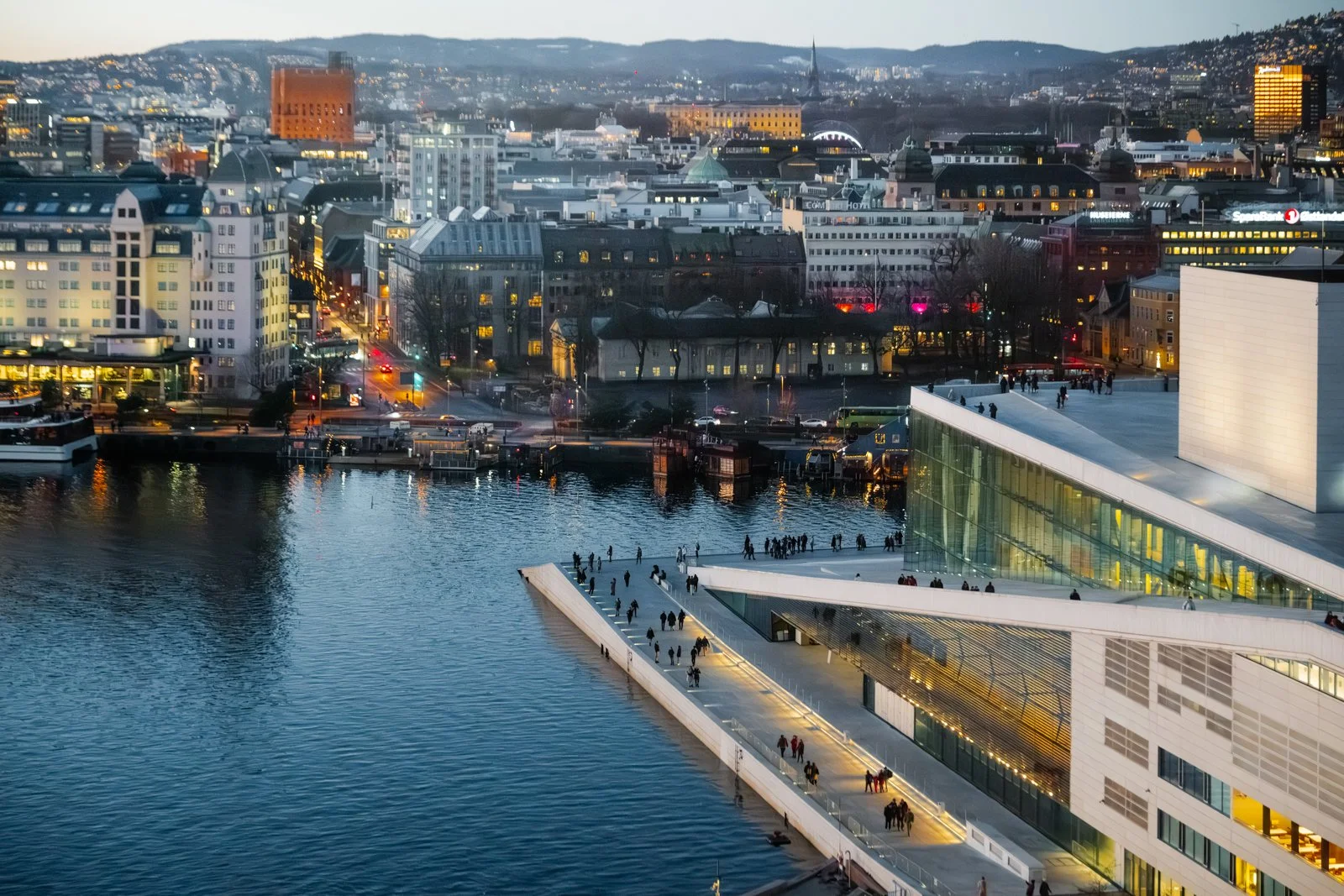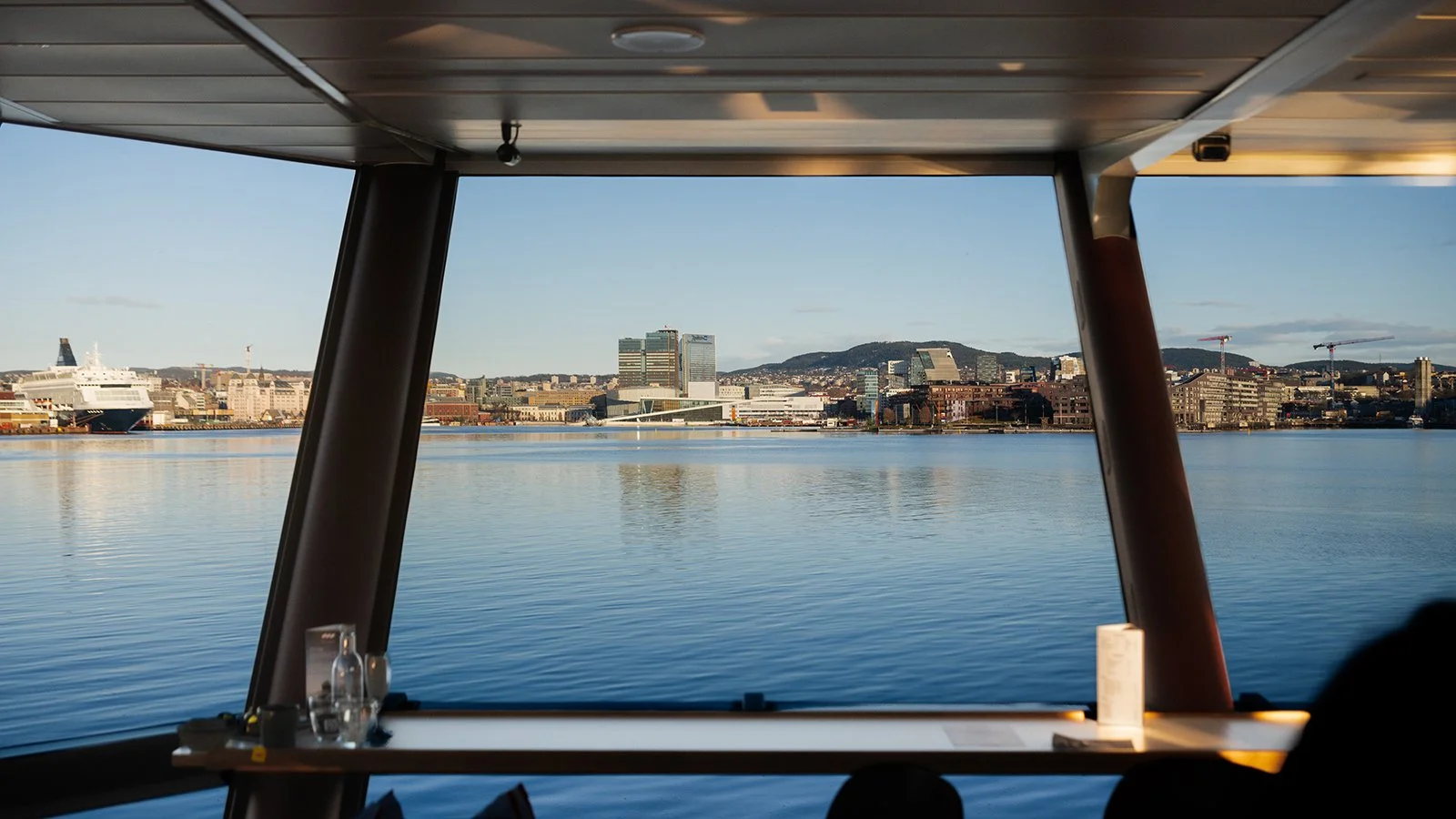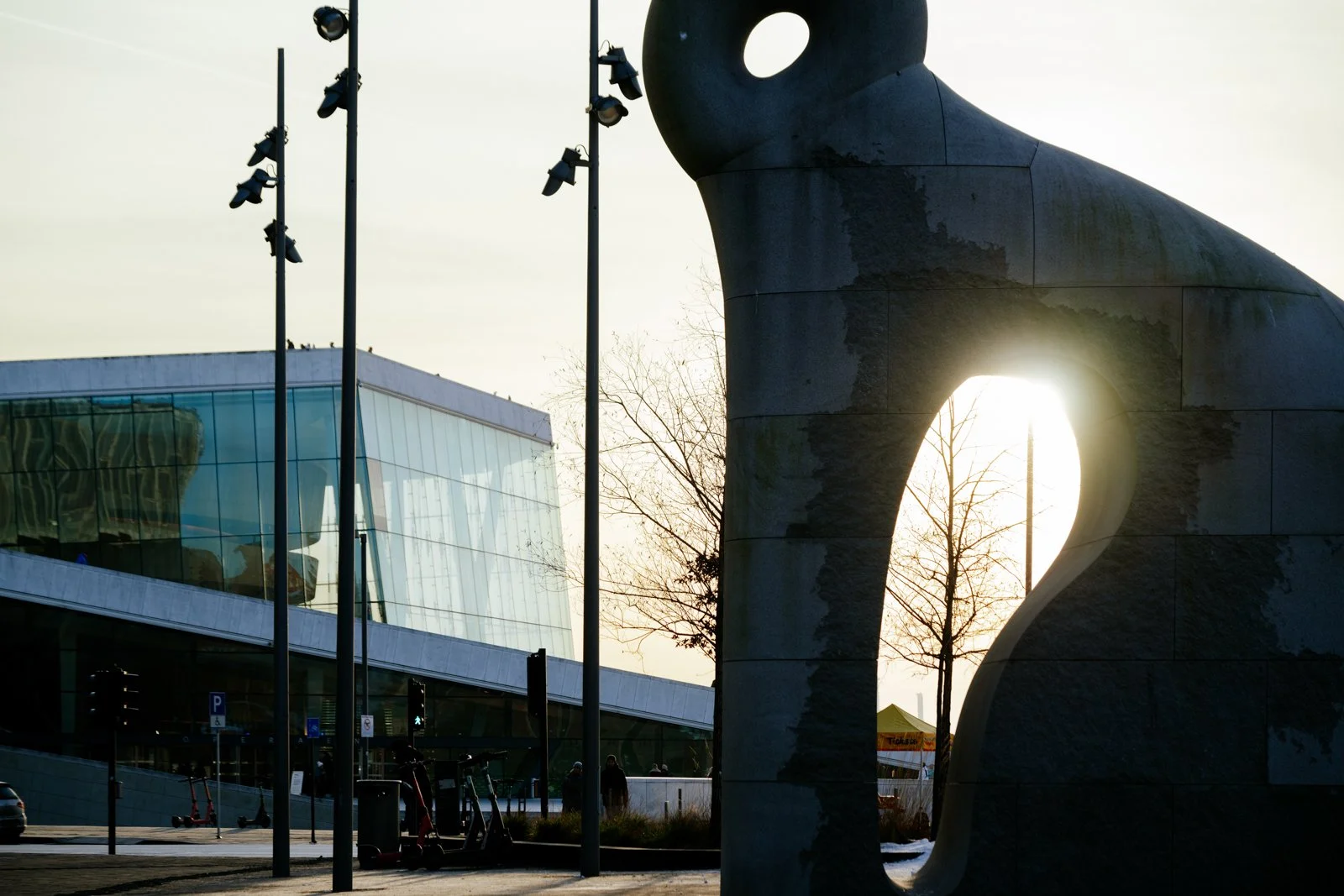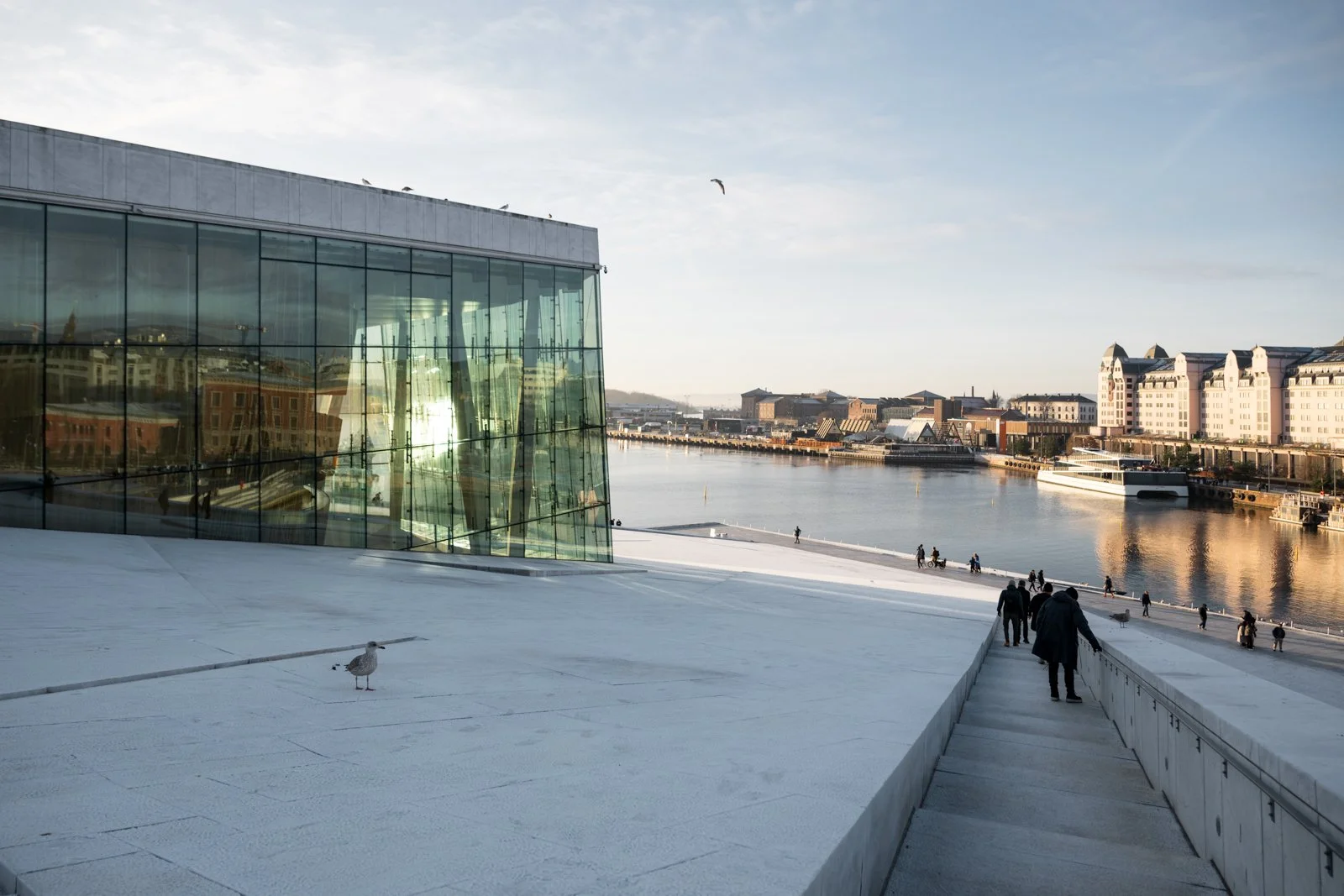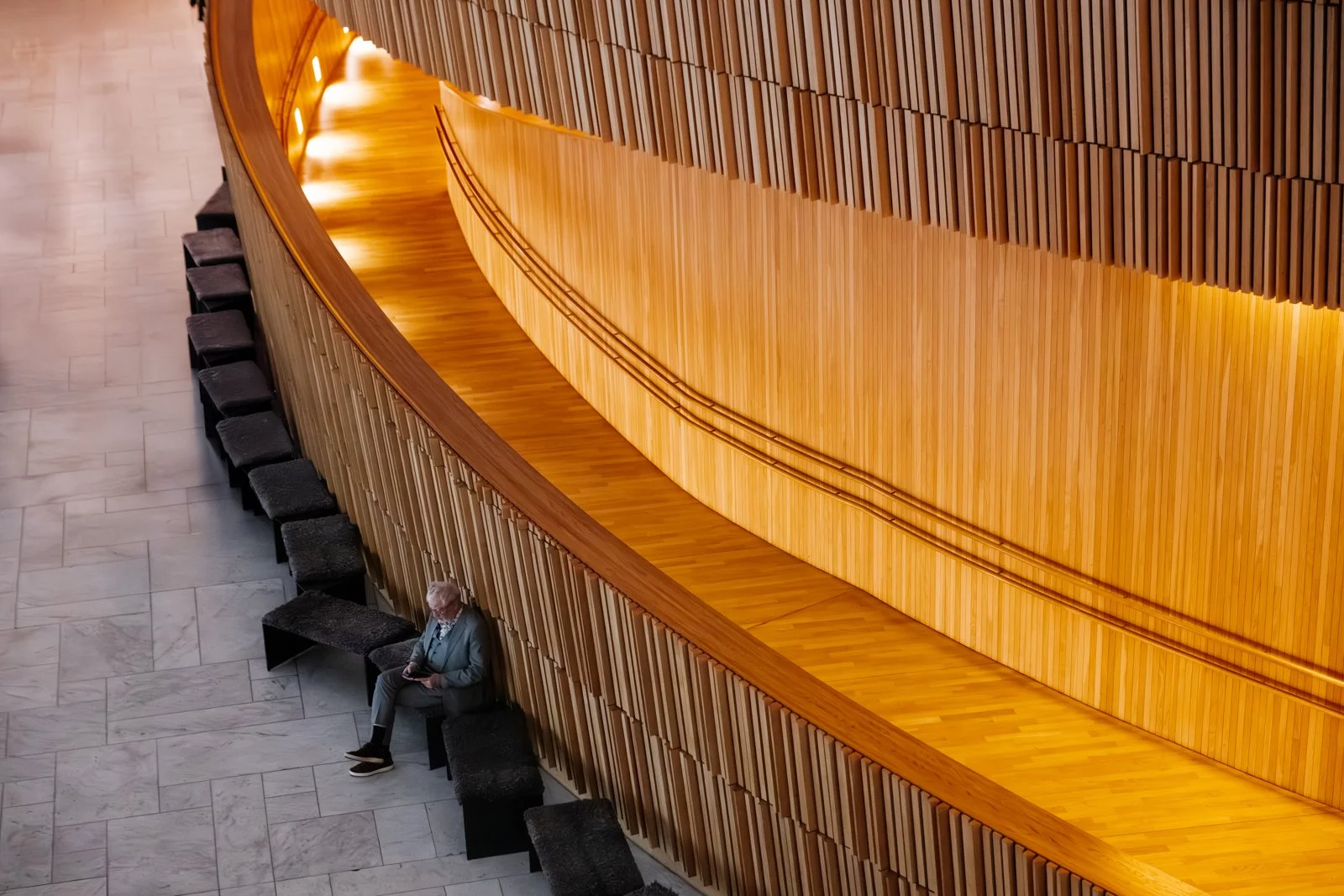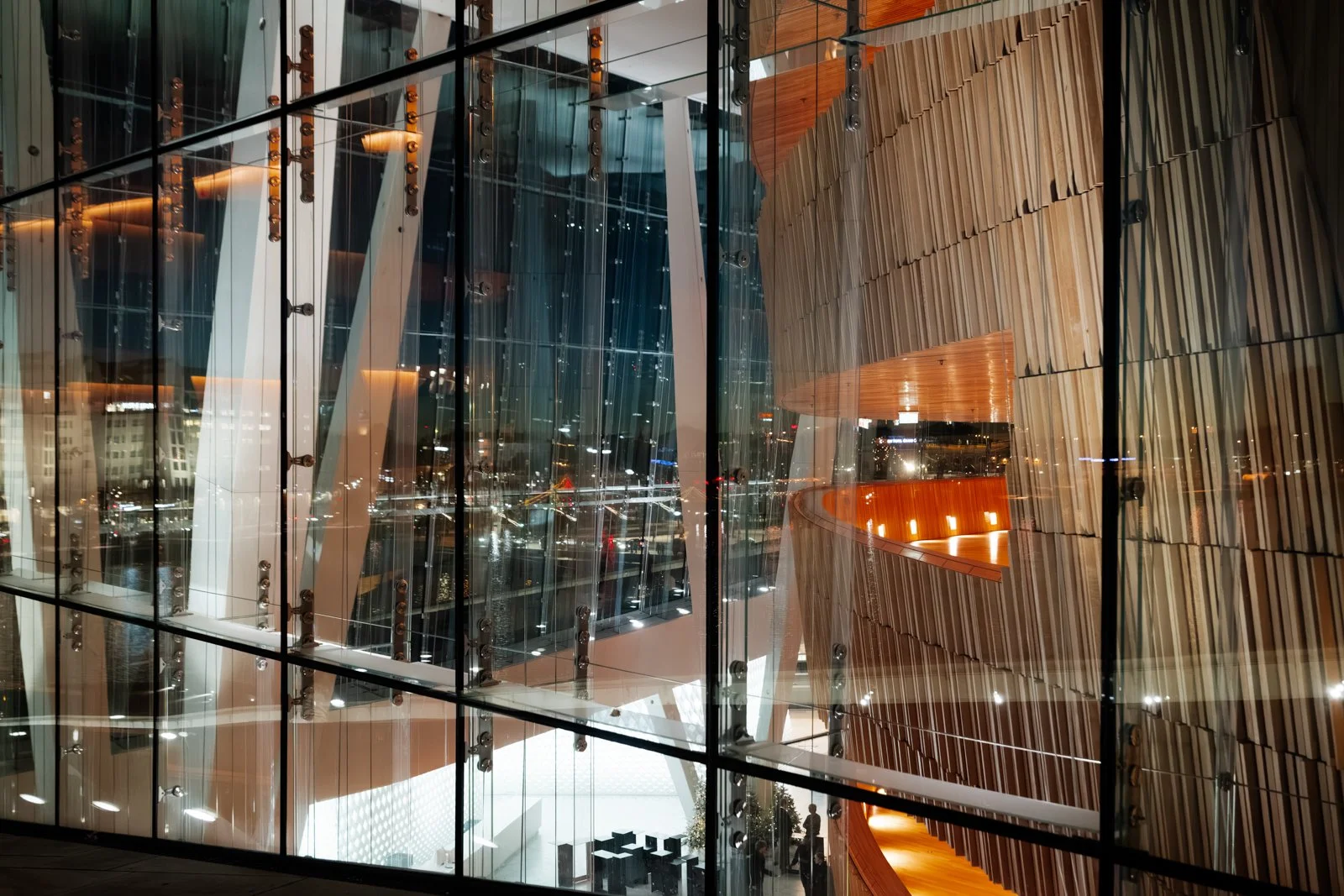Oslo Opera House
Oslo Opera House: A Symbol of Public Architecture and Fjord Integration
Located on the Oslo harbor, the Oslo Opera House stands as a contemporary symbol of Norwegian culture and architecture. Designed by the firm Snøhetta, the core concept was to create a public space accessible to everyone. The most striking feature is the massive, walkable roof, paved with white Italian Carrara marble, which gently slopes down into the Oslo Fjord like an iceberg, blurring the boundaries between architecture and nature, art and everyday life.
More than just the home of the Norwegian National Opera and Ballet, the Opera House, through its innovative design, functions as a free observation deck for citizens and tourists to enjoy views of the city and the fjord. It truly embodies the emphasis of Norwegian design on social liveability and openness.
The Walkable Sloping Marble Roof
The dynamics of people walking on the roof, the texture details of the marble, and the lines where the roof meets the horizontal plane (water).
The Expansive Glass Facade
Focus on the large transparent glass curtain wall facing the water. Photograph the effect of indoor light and shadow penetrating the glass, or frame the fjord scenery within the interior view.
Public Accessibility & Social Space
Capture scenes of people gathering, resting, and picnicking on the roof. This highlights the Opera House's role as a civic activity center and demonstrates the architecture's humanity and social significance.
The interior makes extensive use of warm oak. The main auditorium or interior corridors, highlighting the wood's texture, warmth, and layering and its interaction with light.
Warm Wood Interior (Contrasting with the Exterior)
"She Lies": The Floating Iceberg Sculpture
The large floating art installation "She Lies" is located in the water directly in front of the Oslo Opera House, created by artist Monica Bonvicini. Composed of stainless steel and glass panels, its form mimics an iceberg adrift at sea. The structure slowly rotates with the tides and wind, constantly reflecting the light from the sky and water, creating a visual effect that is both solid and ephemeral, establishing a strong dialogue with the Opera House architecture.
